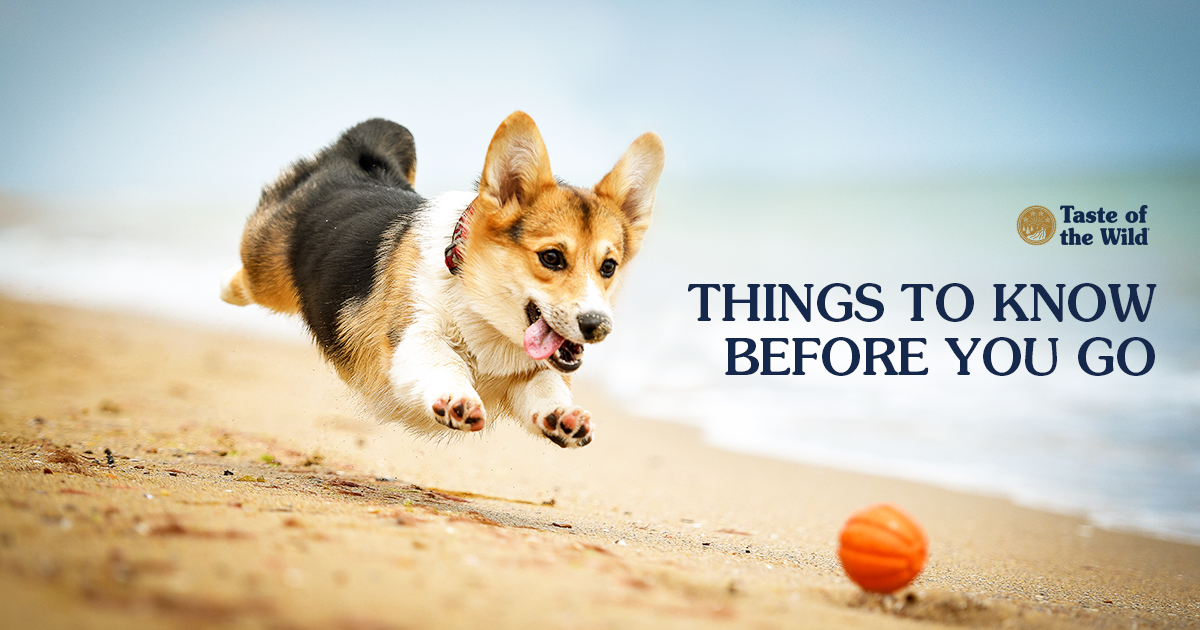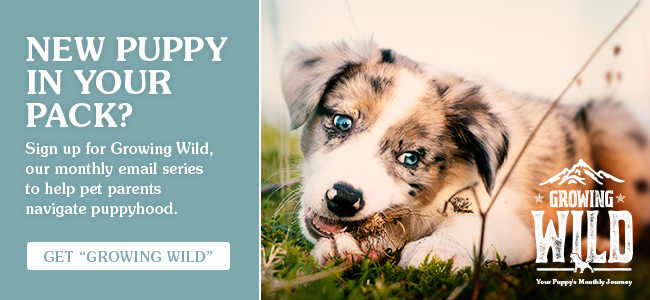
Summer vacation with an adult dog is typically smooth sailing for experienced pet parents. But add a puppy to the mix, and all of a sudden you can be in rough waters. Traveling with a puppy can be quite a bit different than traveling with a fully grown, fully trained dog, so here are some things to think about before you em-bark on your vacation.
The First Place to Check In Is with Your Veterinarian
Before you pack your bags and head out the door on that long-awaited vacation, take a trip to the veterinarian first. They will make sure your puppy is healthy enough to travel and up-to-date on their vaccinations and parasite treatments. You should also share your destination with your veterinarian to see if there are any other recommended vaccinations or parasite treatments for that area. Ask your veterinarian for a copy of your pup’s vaccination records to take with you, and if you are travelling out of state, you may need a certificate of veterinary inspection (CVI).
It’s a good idea to have your veterinarian microchip your puppy before you go, and you should check that their collar ID tags have your current information. If you’re concerned that your puppy may wander off on their own adventure, GPS trackers are available to help you find your puppy using your phone, if it comes to that.
Is Your Puppy Ready to Explore?
You want your vacation to be a fun experience for everyone, but that’s not likely to happen if your puppy is cowering between your legs at every stop along the way. It’s best to make sure your puppy is well-socialized before you go, so they won’t be terrified of all the new people and places. They should also be able to follow basic commands to keep them safe while you’re out and about.
Potty training is another item on the “Is Puppy ready for a vacation?” checklist. Even if they are potty trained, they will need frequent stops (more than an adult dog), so make sure you factor that in when planning your vacation route and schedule. If your puppy hasn’t mastered socialization or training skills yet, it might be best for your puppy to have a staycation until they’re further along in their training program.
It’s also a good idea to get your puppy used to being in the car (if that’s how you’re going to travel). While in the car, they should be restrained in an anchored crate or carrier to stay safe (and not distract the driver), so make sure they become accustomed to the crate or carrier as well. Start with a short drive around the block and then gradually lengthen the drive time as they become familiar with car travel. They’ll be howling along to your road trip playlist in no time.
A Cozy Place for the Night
If you think your puppy is ready for a night away from home, you’ll need a puppy-friendly place to sleep. Wherever your adventure takes you for the night — camping, hotel, friend’s house — you’ll need to make sure your puppy feels comfortable and stays safe. It’s probably a good idea to bring a crate for your puppy to sleep in, no matter where you’re staying, so they can have a familiar place to sleep (with their favorite blankie and toys), and it will keep them from getting into any nighttime mischief.
If you’re staying in pet-friendly lodgings, you may want to take a closer look at that pet deposit fine print, because well, they are a puppy, and accidents (potty or chewing) do happen — there’s a chance you may not be getting that deposit back. If you’re planning on staying with friends or family, do they know you’re bringing a new high-energy family member with you? Your house might be puppy-proofed, but is theirs? Things to consider before you show up at the front door!
Is Everywhere on Your Itinerary Puppy-Friendly?
You’ve made your list of must-see places and must-do activities, but wait — do those places allow pets? It isn’t just where you’ll sleep that you’ll need to think about when it comes to puppy-friendly places. You also need to think about what you’re doing during the day and what you’ll do with your puppy while you’re there. Can they go with you, or will they need a safe place to stay while you’re out? Dogs of any age shouldn’t be left alone in the car, and leaving a puppy in a hotel room with endless opportunities for an unsupervised chewing session is not the best idea (or safe). Take a look at your daytime itinerary and see if it needs some tweaking. Here’s our list of some dog-friendly vacation destinations to get you thinking.
Also keep in mind that puppies need a lot of rest — their growing bodies aren’t ready for strenuous activity just yet. You may want to skip the four-mile hike up a mountain or the long walk on a beach for now. Make sure your plan for the day has plenty of opportunities for your puppy to take a break, and if it’s a hot day, indoor activities are the best idea.
One last thing to remember while you’re on vacation with your puppy: be flexible. Puppies need extra care and attention, and delays to your schedule are inevitable. But sometimes those unexpected stops make the best memories!
RELATED POST: Summer Safety Tips for Your New Puppy
The information in this blog has been developed with our veterinarian and is designed to help educate pet parents. If you have questions or concerns about your pet's health or nutrition, please talk with your veterinarian.

